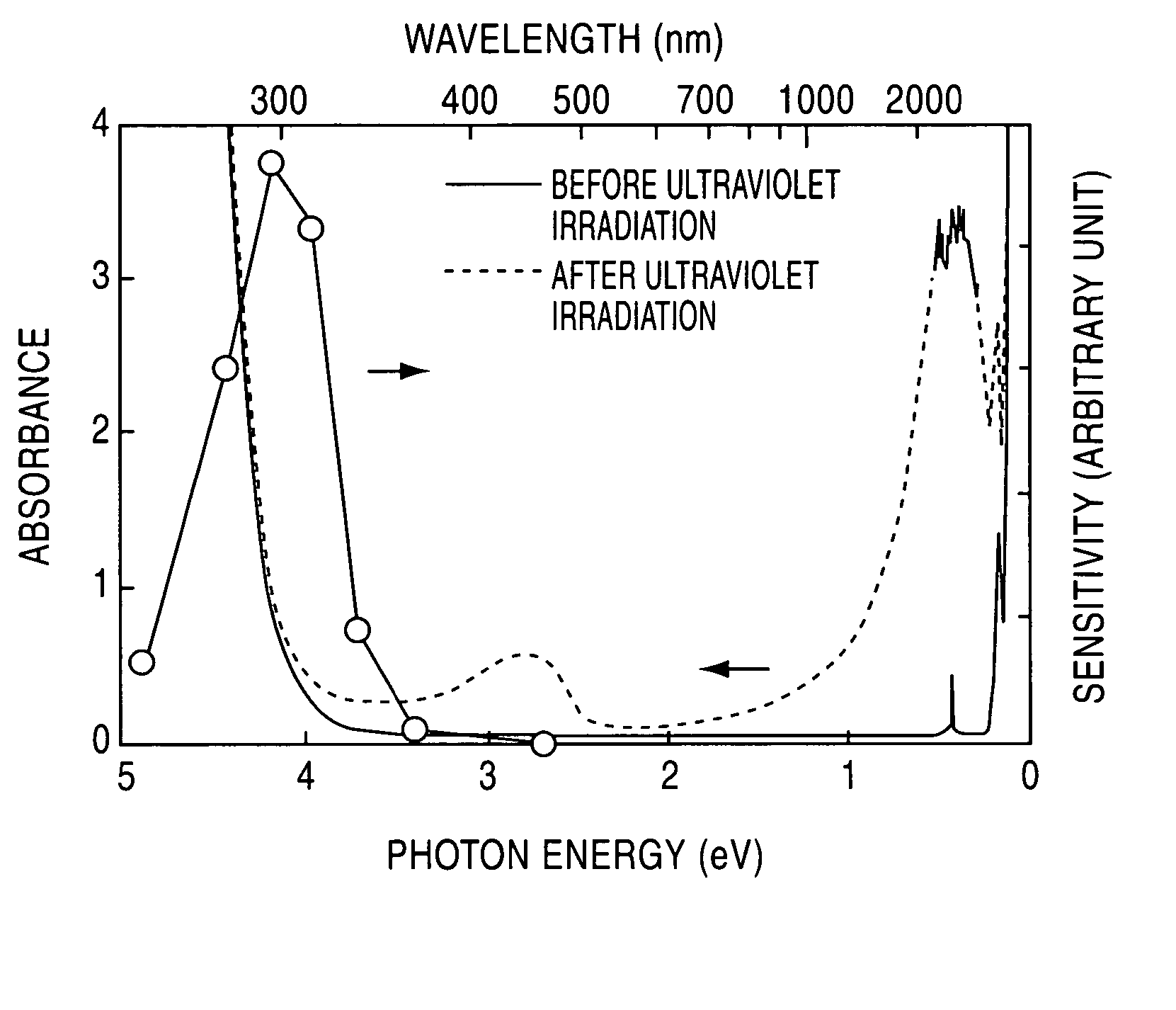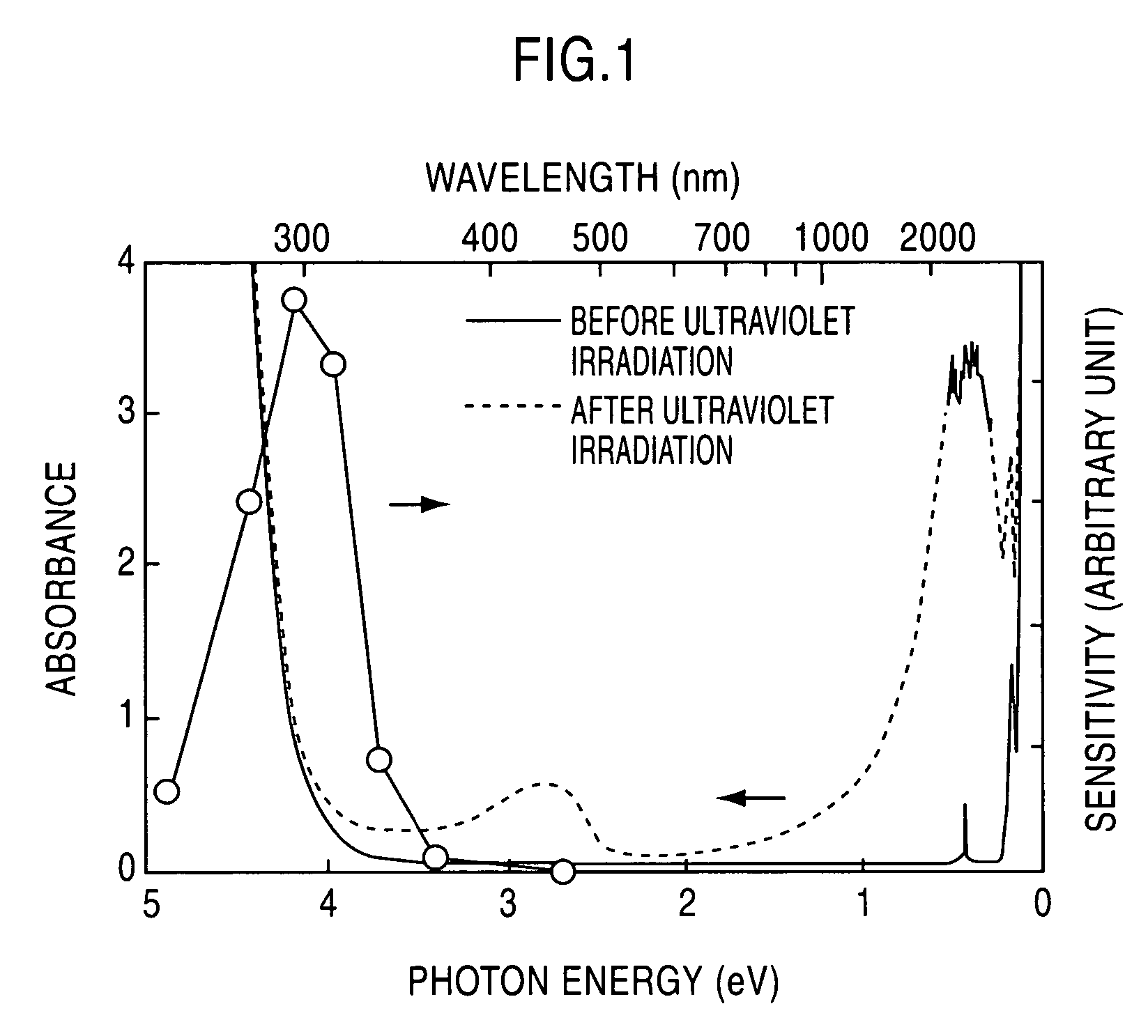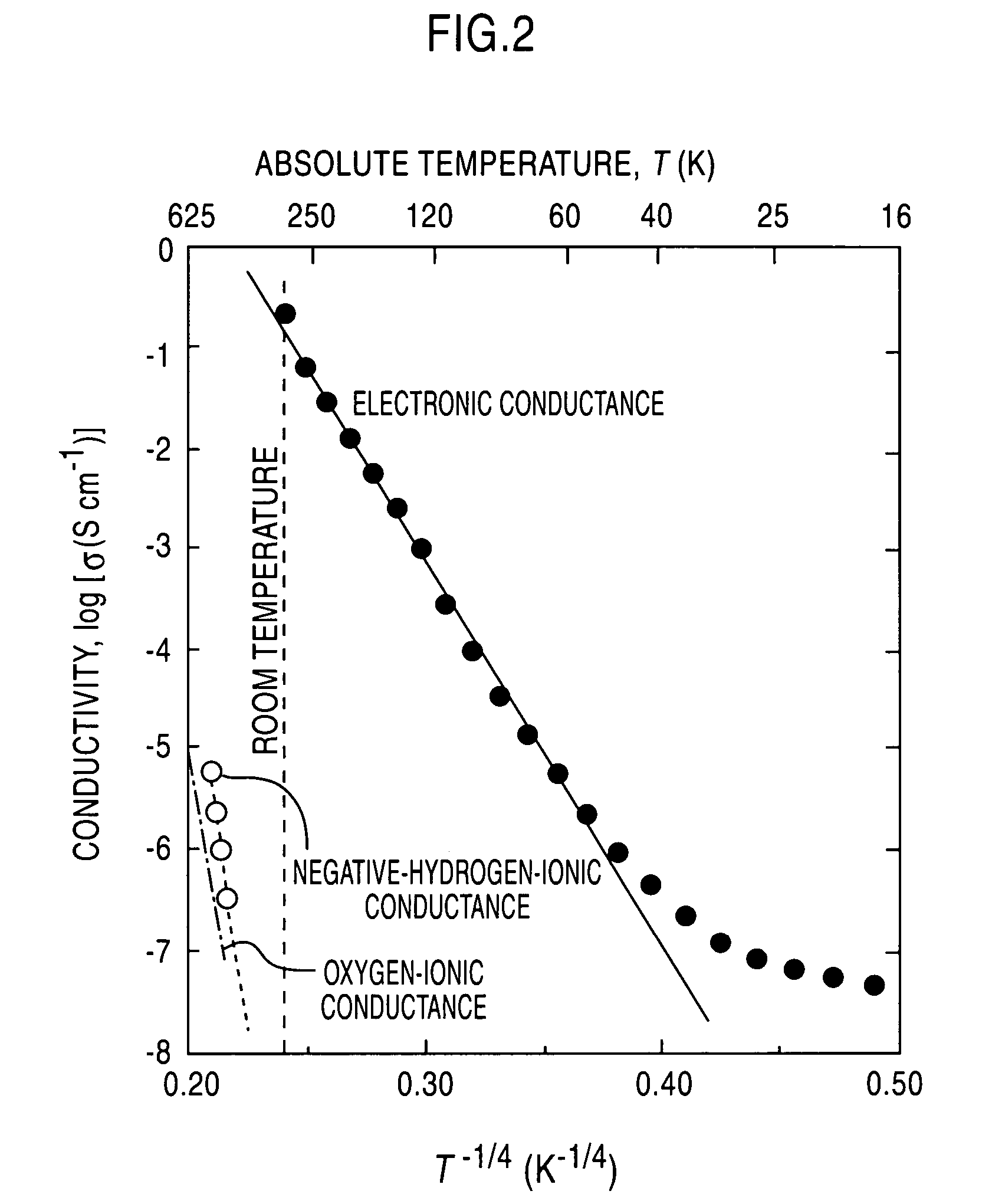Hydrogen-containing electrically conductive organic compound
an organic compound and hydrogen-containing technology, applied in the preparation of alkaline-earth metal aluminates/aluminium-oxide/aluminium-hydroxide, non-metal conductors, etc., can solve the problem of rapid decomposition in the normal atmosphere, and achieve poor stability and rapid decomposition
- Summary
- Abstract
- Description
- Claims
- Application Information
AI Technical Summary
Benefits of technology
Problems solved by technology
Method used
Image
Examples
example 1
[0047] A C12A7 single crystal prepared through a floating zone (FZ) process was formed into a plate-shaped sample having a mirror finished surface and a thickness of 300 μm. This sample was held in the flow of a mixed gas consisting of 20 volume % of hydrogen and 80 volume % of nitrogen, at 1300° C. for two hours, and then rapidly cooled in the same atmosphere. The heat-treated sample was irradiated with ultraviolet light of 254 nm (4.9 eV) at 1×1020 photons / cm2. FIG. 1 shows light absorption spectrums before and after the ultraviolet irradiation. The white circular marks in FIG. 1 indicate evaluated values of light absorption speed, or photosensitivity, obtained by changing the wavelength of ultraviolet light to be radiated.
example 2
[0048] A C12A7 single crystal prepared through a floating zone (FZ) process was formed into a plate-shaped sample having a mirror finished surface and a thickness of 300 μm. This sample was held in the flow of a mixed gas consisting of 20 volume % of hydrogen and 80 volume % of nitrogen, at 1300° C. for two hours, and then rapidly cooled in the same atmosphere. The heat-treated sample was irradiated with light emitted from a Xe lamp at a light intensity of 0.5 W / cm2 and subjected to a processing for eliminating a wavelength of 340 nm or more, for 30 minutes or more until the change in light absorption was saturated. The irradiated sample exhibited an enhanced electric conductivity having a digit number greater by about eight than that before the light irradiation. The change of electronic conductivity relative to temperature in the sample after the light irradiation is indicated by the block circular marks in FIG. 2. After completion of this measurement, the sample was heated up to ...
example 3
[0050] A C12A7 single crystal prepared through a floating zone (FZ) process was formed into a plate-shaped sample having a mirror finished surface and a thickness of 300 μm. This sample was held in the flow of a mixed gas consisting of 20 volume % of hydrogen and 80 volume % of nitrogen, at 1300° C. for two hours, and then rapidly cooled in the same atmosphere. The heat-treated sample was irradiated with light emitted from a Xe lamp at a light intensity of 0.5 W / cm2 and subjected to a processing for eliminating a wavelength of 340 nm or more, for 4 minutes, and thereby converted to an electrically conductive material having a color. The respective changes of the absorbance and conductivity of this sample at 440 nm and 850 nm were measured while heating the sample from a room temperature at a heating rate of 10° C. / min. FIG. 3 shows the measurement result. At about 400° C., the light absorption was lost, and the electronic conductivity was reduced. That is, the sample lost the color ...
PUM
| Property | Measurement | Unit |
|---|---|---|
| Fraction | aaaaa | aaaaa |
| Carrier concentration | aaaaa | aaaaa |
| Electrical conductivity | aaaaa | aaaaa |
Abstract
Description
Claims
Application Information
 Login to View More
Login to View More - R&D
- Intellectual Property
- Life Sciences
- Materials
- Tech Scout
- Unparalleled Data Quality
- Higher Quality Content
- 60% Fewer Hallucinations
Browse by: Latest US Patents, China's latest patents, Technical Efficacy Thesaurus, Application Domain, Technology Topic, Popular Technical Reports.
© 2025 PatSnap. All rights reserved.Legal|Privacy policy|Modern Slavery Act Transparency Statement|Sitemap|About US| Contact US: help@patsnap.com



